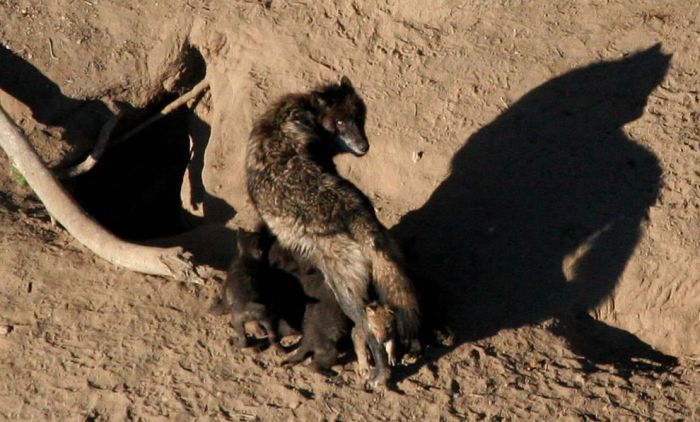|
|
Gray Wolf
|
Wolf pelts are primarily used for scarfs and the trimmings of women's garments, though they are occasionally used for jackets, short capes, coats, mukluks and rugs. The quality of wolf peltries rests on the density and strength of the fur fibre, which keeps the fur upright and gives the pelt an appealing bushy aspect. These characteristics are mostly found in northern wolf populations, but gradually lessen further south in warmer climates. North American wolf pelts are among the most valuable, as they are silkier and fluffier than Eurasian peltries. The pelts of wolves killed by poison are mostly worthless.
In Medieval Europe, pelts were considered the only practical aspect of wolves, though they were seldom used, due to the skin's foul odour. In Scandinavian folklore, wolf-skin girdles assisted in transforming the wearers into werewolves. Several Native American tribes used wolf pelts for medicinal purposes, though some Inuit tribes favour dog skin over wolf skin, as the latter is thinner, and more prone to tearing when sewn. The Pawnee wore wolf skins as capes when exploring enemy territories. The United States Army used wolf skin for parkas during the later stages of WWII and the Korean War to protect the faces of soldiers from frostbite. In the Soviet Union, between 1976 and 1988, 30,000 wolf pelts were produced annually. Recent statistics from CITES indicate that 6,000–7,000 wolf skins are internationally traded each year, with Canada, the former Soviet Union, Mongolia and China being the largest exporters, and the United States and Great Britain being the largest importers. Overall, the harvesting of wolves for their fur has little impact on their population, as only the northern varieties (whose numbers are stable) are of commercial value. Wolf trapping for fur remains a lucrative source of income for many Native Americans.
• Wolves as pets
Keeping wolves as pets has grown in popularity. In the United States alone, there are an estimated 80,000-2 million privately owned wolves. Tame wolves tend to be less predictable and manageable than dogs. While dogs typically alter their behaviours to accommodate their handlers, the opposite is true for tame wolves. In contrast to dog pups, which are able to be socialised to humans at up to ten weeks of age, wolf pups are unable to do so after 19 days. Because wolf milk contains more arginine than can be found in puppy milk substitutes, an arginine supplement is needed when feeding pups below the weaning age. Failure to do so can result in the pups developing cataracts. Wolves lack any alteration of their predatory behaviour, and can thus not be fully trusted in situations where their prey drive can be given adequate stimulation. In contrast to dogs, which are usually accepting of strangers, treating them almost as an extension of their pack, wolves become increasingly xenophobic and intolerant of strangers not part of their immediate pack as they age. While dogs readily, and actively form social bonds with humans, wolves can only do so in the absence of adult conspecifics. Pups under one year of age are generally not aggressive toward strangers, though their aggression increases with age, particularly during the mating season. Males may be more aggressive and difficult to handle than females. Wolves are difficult to contain in standard kennels, as they exceed dogs in observational learning and are able to quickly learn how to undo latches by simply watching their handlers do so. Once wolves learn how to escape confinement, it becomes near impossible to contain them.
|
|









